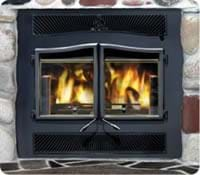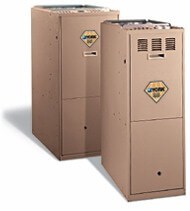Winter Heating Tips
Overview
A major contributing factor in residential fires is the use of wood burning stoves and space heaters. Many of these fires can be prevented. The tips listed below are meant to help educate and advise you on fire safety and fire prevention within your homes.
Wood Stoves and Fireplaces

- Be sure the fireplace or wood stove is installed properly. Wood stoves should have adequate clearance of 36 inches from combustible surfaces and proper floor support and protection.
- Wood stoves should be UL listed, solid construction and good quality.
- Have the chimney inspected annually and cleaned if necessary, especially if the fireplace has not been used in quite a long time.
- Keep tree branches and leaves at least 15 feet away from the top of the chimney.
- Install a chimney cap to keep debris and animals out of the chimney.
- Check the outside of the chimney for cracks or loose bricks. All unused flue openings should be sealed with solid masonry.
- Do not use flammable liquids to start or rekindle any fire.
- Choose the right fuel. For burning firewood in wood stoves or fireplaces, choose well-seasoned wood that has been split for a minimum of six months to one year and stored in a covered and elevated location. Never burn Christmas trees or treated wood in your fireplace or wood stove.
- Keep a glass or metal screen in front of the fireplace opening to prevent embers or sparks from jumping out and to help prevent burns to your home's occupants.
- The stove should be burned hot twice a day for 15-30 minutes to reduce the amount of creosote buildup.
- Don't use excessive amounts of paper to build a roaring fire in fireplaces. It is possible to ignite creosote in the chimney by overbuilding the fire.
- Never burn charcoal indoors. Burning charcoal can give off lethal amounts of carbon dioxide.
- Keep flammable materials away from your fireplace mantel and hearth. Sparks could easily ignite these materials. Keep furniture at least 36 inches away from the hearth.
- Make sure your fireplace fire is out before you go to sleep. NEVER close your damper with hot ashes in the fireplace. A closed damper will heat a fire again and force carbon monoxide into the home.
- Follow package directions on synthetic logs. NEVER break apart a synthetic log to quicken the fire. Do not use more than one log at a time. These logs burn unevenly, increasing carbon monoxide levels.
Proper Disposal of Ashes
- Never discard hot ashes inside or near the home.
- Place ashes in a metal container with a tight fitting lid outside and away from the house.
- Ashes should never be disposed of in plastic containers, cardboard boxes or paper grocery bags.
- After the ashes have been in a metal container for one week, they will then be safe to dispose of in your trash.
Heat Furnaces
 Check if furnace controls and emergency shutoffs are in proper working condition.
Check if furnace controls and emergency shutoffs are in proper working condition.- Inspect the walls and ceiling near the furnace and along the chimney line. If the wall is hot or discolored, additional pipe insulation or clearance may be required.
- Check the pipe seams and pipe flue for holes and cracks and be sure they are well supported. Soot along or around a seam may be an indicator of a leak.
- Keep trash and other combustibles away from heating systems.
- Leave furnace repairs to qualified specialists. Do not attempt repairs yourself unless you are qualified.
Space Heaters
- Look for one that is listed with a nationally-recognized testing laboratory. These heaters have been tested to meet specific safety standards, and manufacturers are required to provide important use and care information to the consumer. On heaters that are not listed, consumers have less assurance that the safety features and operating instructions are adequate.
- Purchase a heater with a guard around the heating element. A wire grill or other protection is essential to keep fingers or fabrics from touching the hot element. Portable electric heaters that heat by circulating oil or water, however, usually have lower surface temperatures and may not need guards.
- Before using the heater, read and follow the instructions for its operation and maintenance.
- If you must use an extension cord, make sure it is a heavy duty cord marked with a #14 gauge or larger wire. An incorrectly-sized cord may create a fire hazard. If the heater's plug has a grounding prong, use only a grounding (three-wire) extension cord.
- Never run the heater's cord (or any cord) under rugs or carpeting.
- Do not leave the heater operating unattended or operating while sleeping. Portable electric air heaters are designed for use only as temporary supplemental heating and only while attended.
- Do not use an electric heater as a dryer by placing clothing over it and never use a heater to thaw pipes.
- Keep the heater in safe working condition. Replace missing guards and controls at once. Never operate a defective heater.
- Do not place the heater where children might play near it or where people might trip over or bump into it.
- Place electric heaters on a level surface for stability.
- Avoid using space heaters in bathrooms, or other areas where they may come in contact with water.
Electric Blankets
During cold weather, many of us start using electric blankets to stay warm. But be careful, don't risk a fire. You can prevent fires caused by electric blankets by taking some simple steps.
Checking your electric blanket:
If your blanket or any part of the wiring shows any of these danger signs, you should have it checked or replaced:
- Fraying fabric
- Scorch marks
- Exposed elements
- Creasing or folding
- Soiling
- Damp patches
- Tie tapes damaged or missing
- Loose connections
Buying a new electric blanket:
It's cheaper to replace a worn electric blanket than it is to replace your home or heal your family. If you are in any doubt about the condition of your blanket, throw it out and buy a new one.
You should replace your electric blanket at least every 10 years. Don't buy a second-hand blanket. Make sure the blanket has an overheat protection.
Store your blanket safely:
Storing your blanket in the correct manner will ensure you get the best from it. Don't fold electric blankets - it can damage the wiring. Better to roll them. Or you can store blankets by putting them on a spare bed. Electric underblankets can be left on your bed all year if you wish.
Use your electric blanket safely:
- Always follow the manufacturer's instructions.
- Never use an electric underblanket as an electric overblanket, and vice versa.
- Keep all blankets flat.
- Tie electric underblankets to the bed or mattress - this stops them from slipping and creasing, which could damage them.
- Don't get blankets wet, and if your blanket does get wet, don't use it. Never switch it on to dry it.
Thawing Frozen Pipes
Water has a unique property in that it expands as it freezes. This expansion puts tremendous pressure on whatever is containing it, including metal or plastic pipes. No matter the "strength" of a container, expanding water can cause pipes to break.
Pipes that freeze most frequently are those that are exposed to severe cold, like outdoor hose bibs, swimming pool supply lines, water sprinkler lines, and water supply pipes in unheated interior areas like basements and crawl spaces, attics, garages, or kitchen cabinets. Also, pipes that run against exterior walls that have little or no insulation are also subject to freezing.
Do not use a blowtorch, kerosene or propane heater, charcoal stove, space heater or other open flame device to thaw frozen pipes. A blowtorch can make water in a frozen pipe boil and cause the pipe to explode. All open flames in homes present a serious fire danger, as well as a severe risk of exposure to lethal carbon monoxide.
To Thaw Frozen Pipes:
- If you turn on a faucet and only a trickle comes out, suspect a frozen pipe. Locate the suspected frozen area of the water pipe. Likely places include pipes running against exterior walls or where your water service enters your home through the foundation.
- Keep the faucet open. As you treat the frozen pipe and the frozen area begins to melt, water will begin to flow through the frozen area. Running water through the pipe will help melt more ice in the pipe.
- Apply heat to the section of pipe using an electric heating pad wrapped around the pipe, an electric hair dryer, or wrapping pipes with towels soaked in hot water.
- Apply heat until full water pressure is restored. If you are unable to locate the frozen area, if the frozen area is not accessible, or if you can not thaw the pipe, call a licensed plumber.
- Check all other faucets in your home to find out if you have additional frozen pipes. If one pipe freezes, others may freeze, too.
During Cold Weather, Take Preventive Action:
- Keep garage doors closed if there are water supply lines in the garage.
- Open kitchen and bathroom cabinet doors to allow warmer air to circulate around the plumbing. Be sure to move any harmful cleaners and household chemicals up and out of the reach of children.
- When the weather is very cold outside, let the cold water drip from the faucet served by exposed pipes. Running water through the pipe - even at a trickle - helps prevent pipes from freezing because the temperature of the water running through it is above freezing.
- Keep the thermostat set to the same temperature both during the day and at night. By temporarily suspending the use of lower nighttime temperatures, you may incur a higher heating bill, but you can prevent a much more costly repair job if pipes freeze and burst.
- If you will be going away during cold weather, leave the heat on in your home, set to a temperature no lower than 55º F.
Future Protection:
- Consider relocating exposed pipes to provide increased protection from freezing. Pipes can be relocated by a professional if the home is remodeled.
- Add insulation to attics, basements and crawl spaces. Insulation will maintain higher temperatures in these areas.
- When the weather warms up, check unused portions of your water system for freezing damage and leaks to avoid possible flooding damage from undetected cracked or broken pipes.
- For more information, please contact a licensed plumber or building professional.
If you'd like to read more about winter safety tips, visit the National Fire Protection Association's safety website or the Red Cross website.
Source: FEMA, US Fire Administration, US Consumer Products Safety Commission and the Boise Fire Department
© 2024 City of Boise. All rights reserved.
Message Sent Successfully!
Message Failed To Send.
Send a Message to Fire Prevention
If this is an emergency, please call 911.